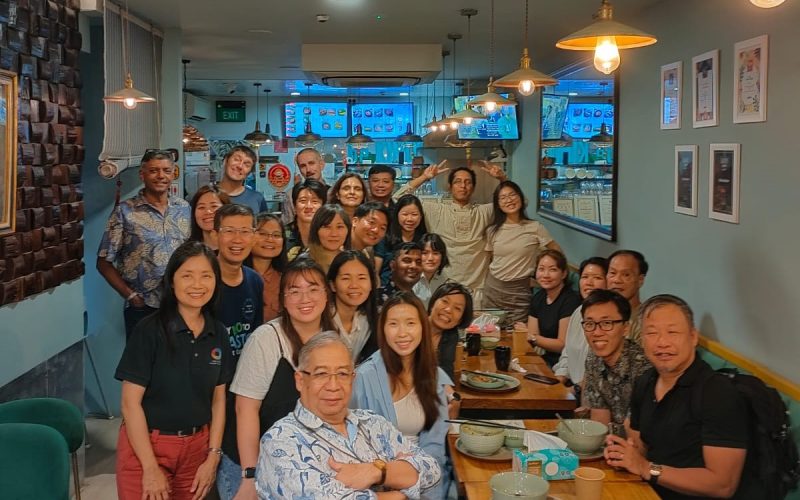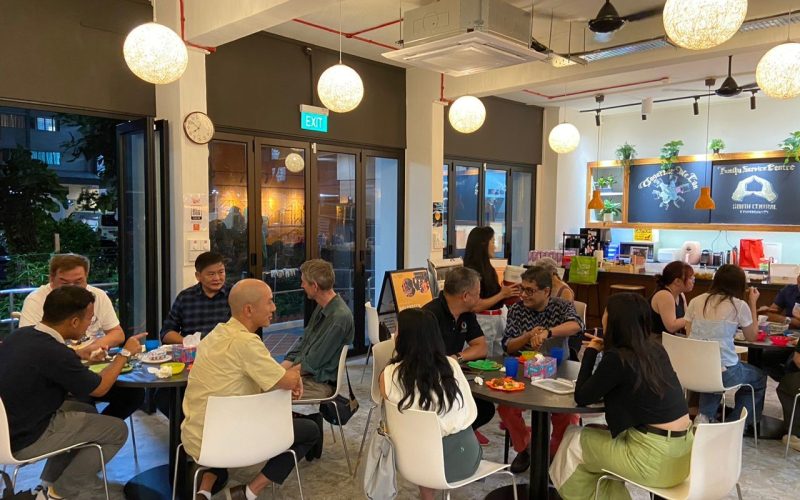
This event was held in conjunction with the +Pavilion Exhibition at Marina Barrage, Singapore.
To start, PUB Marina Barrage took us on a guided tour of the facility, showing us how the barrage works to separate fresh water in the reservoir from seawater as well as serve as a tidal barrier to prevent flooding in low-lying city areas. We then visited the Sustainable Singapore Gallery where we learnt about Singapore’s relationship with water as a precious resource, how it was managed in the past, and the current and future strategy to maintain a clean and green environment for everyone. As a final treat, we were taken to the roof to experience how the barrage also serves as a recreational facility.
For the second part of the event, we moved to the screening room for talks on the theme “Natural Cycles – Food & Shelter“.
The speakers provided insights into how working within natural cycles enables us to employ low-energy solutions which harness the forces of Nature to satisfy our fundamental needs for food and shelter without damaging the life-giving ecosystem on which we depend.
Catherine Loke gave a brief introduction on what sustainability and circularity really mean, and also provided insight into how our current efforts towards sustainability may actually push us into energy, material resource and food crises if we continue with our high consumption and GDP growth-based economic system.
Nicholas Chin and Tan Jing Xiang shared with us the advantages and benefits of natural soil-based farming, and how composting is Nature’s way of recycling nutrients that nourish us and other living creatures with whom we share Earth’s resources. In particular they showed us how vermicomposting works, i.e. how earthworms as nature’s tillers and blenders are able to break down our food scraps and create healthy soil enriched with enzymes and beneficial bacteria.
Tim Tan shared how by using parts of the kenaf plant that are typically thrown away, we can produce prefabricated structural building panels with similar (and often superior) properties to concrete but without the harmful environmental impact. He also gave us an introduction to AffordAble Abodes’ products which are composed of >95% upcycled industrial and agricultural waste products, made into durable structural elements which provide good insulation against heat and sound.
Kevin Lim took us through the design approach behind the +Pavilion which showcases a vignette of a sustainable built environment through the modularity and scalable design of a glulam timber structure. The pavilion design was inspired by the geometry of the Swiss cross from which ‘sprouts’ the main structural members. Studio SKLIM’s design and collaborative role also involved Kenopy (Kenaf fibre biocomposite) in the form of roofing elements and the merging of modern iconic furniture pieces with artisanal rattan (one of the fastest growing non-timber forest product), thereby preserving past crafts for a sustainable future.
Laurent Corpataux elaborated on how the +Pavilion came about and how modern Mass Timber can tackle issues of climate change, productivity and re-usability. To discuss the topic of sustainability, we have to look at it holistically from different angles, including carbon emissions to produce products as well as computational engineering to increase efficiency. Laurent also touched on the principles of biomimicry that he and his company are using in their structural engineering approach.
Finally, we visited the +Pavilion at the Central Courtyard where participants chatted with the speakers, had a look at the exhibits there, interacted with earthworms, and made new friends.
See photos of the event here.
Watch the video of the talks here.
Written by Ar. Catherine Loke






